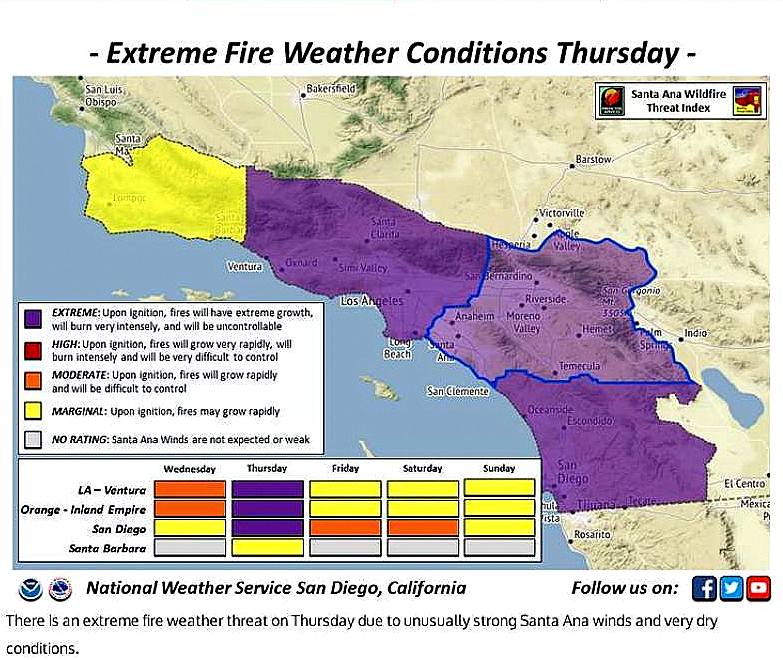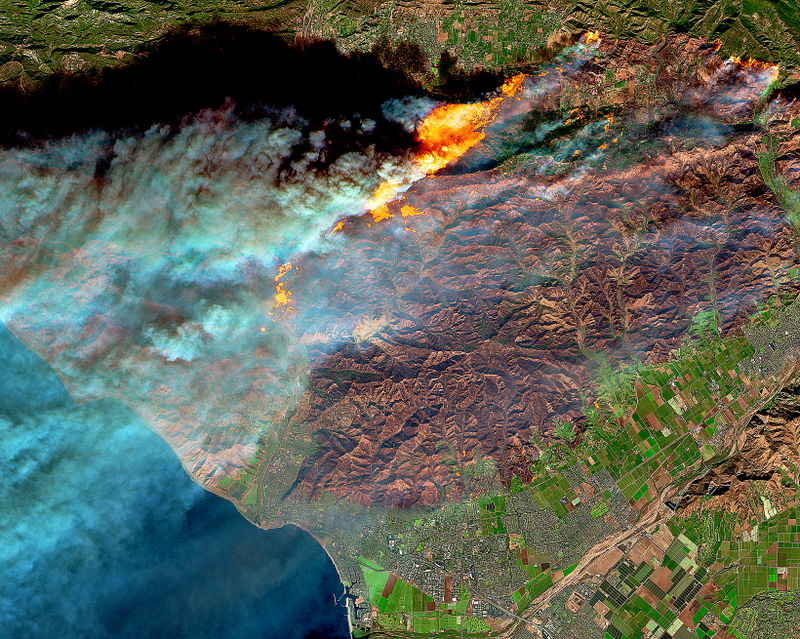Purple is the New Red
Wildfires in Westside Los Angeles 12-5-2019, California (credit: KPCC-FM)
In December 2019, Fires erupted in Southern California. It is worth remembering those extreme fires.
From Ventura to Los Angeles and San Bernardino to San Diego first responders and fire personnel were stretched beyond all expectations. In affected portions of West Los Angeles near Hollywood, some of the City's iconic palm trees burst into flames from the intense heat. The fires were whipped by dry Santa Ana winds with gusts over 80mph that pushed cinders widely to propagate more flames. Smoke from the fires was easily seen from space.
Evidence of 'warning signals' on the amplified influence of climate change that affects both droughts and erratic rainfall in California continues to build. Even after a week, the fires remained largely out-of-control and the National Weather Service was forced to declare a new fire code designation: code purple. This highest level of fire severity indicates:
"the affected areas are under conditions so extreme that any fire could experience extreme growth, burn intensely, and be uncontrollable".


Extreme Code Purple Fire Conditions, California (credit: NWS) Ventura County Fires from Space (credit: ESA Sentinel-2 satellite)
The Santa Ana winds driving the fires often occur during the fall and winter months in California. The fire responders working throughout the Southland can't take any time off to unwind at the beach. They were on "constant call" across the western states as climate change continues becoming more unpredictable. We need to learn from this history and build more resilient buildings and reduce forest fuels to reduce the impact of fires. It is a very big and expensive task to accomplish.
WHB